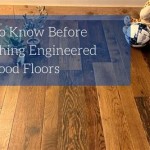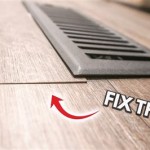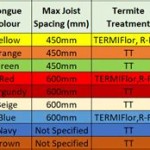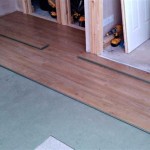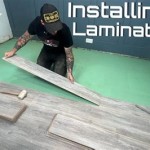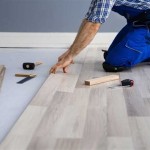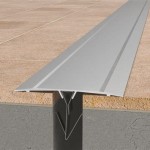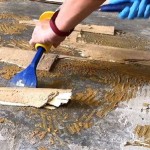Beautiful And Durable Natural Birch Flooring For Kitchen
When undertaking a kitchen renovation or new construction, selecting the appropriate flooring is a pivotal decision. The kitchen environment presents unique challenges, including high foot traffic, potential spills, and temperature fluctuations. Therefore, the chosen flooring material must be both aesthetically pleasing and capable of withstanding these demanding conditions. Natural birch flooring emerges as a compelling option, offering a blend of beauty, durability, and practicality suitable for the heart of the home.
Birchwood is a hardwood sourced from birch trees, predominantly found in North America and Europe. It is characterized by its light coloration, typically ranging from creamy white to pale yellow, with subtle grain patterns that impart a sense of warmth and natural elegance. Birch is categorized as a closed-grain hardwood, contributing to its relative smoothness and resistance to wear. Understanding the properties of birchwood is crucial for appreciating its suitability as a kitchen flooring material.
The selection of kitchen flooring necessitates a careful evaluation of various factors. These include durability, resistance to moisture, ease of maintenance, aesthetic compatibility with the overall kitchen design, and cost-effectiveness. Birch flooring addresses these considerations with varying degrees of success, which will be explored in detail in subsequent sections.
Durability and Hardness of Birch Flooring
Durability is a primary concern when selecting kitchen flooring, as this space experiences significant foot traffic and is susceptible to impacts from dropped objects. The Janka hardness test is a standard measure of a wood's resistance to denting and wear. On the Janka scale, birch typically scores between 1260 and 1470, placing it within the mid-range of hardwood options. Yellow birch tends to be harder than white birch. This hardness rating suggests that birch flooring is sufficiently durable for residential kitchen use, able to withstand normal wear and tear without excessive scratching or denting.
However, it is important to acknowledge that birch flooring is not as hard as some other hardwood options, such as oak or maple. In high-traffic kitchens or households with pets, additional precautions may be necessary to preserve the flooring's appearance. These precautions could include the use of area rugs in high-traffic zones, felt pads under furniture legs, and regular sweeping or vacuuming to remove abrasive particles.
The finish applied to the birch flooring also plays a significant role in its overall durability. A high-quality polyurethane finish, for instance, can provide a protective layer that resists scratches, stains, and moisture penetration. The number of coats applied and the specific type of finish will affect the flooring's longevity and resistance to damage. Routine maintenance and occasional refinishing can further extend the life of birch flooring in a kitchen environment.
Furthermore, the construction of the birch flooring impacts its resistance to wear. Solid birch flooring consists of planks made from a single piece of birchwood, while engineered birch flooring comprises a birch veneer bonded to a core of plywood or high-density fiberboard. Engineered flooring is often more dimensionally stable than solid hardwood, meaning it is less prone to expansion and contraction in response to changes in humidity and temperature. This stability can be particularly advantageous in kitchens, where moisture levels can fluctuate.
Moisture Resistance and Kitchen Considerations
The kitchen environment is inherently susceptible to moisture exposure from spills, leaks, and humidity. Therefore, the moisture resistance of the chosen flooring material is a critical consideration. While birchwood is not inherently waterproof, it can be treated to enhance its resistance to moisture damage. Properly sealed birch flooring can withstand occasional spills and splashes without sustaining permanent damage.
The finish applied to the birch flooring is the primary defense against moisture penetration. Polyurethane finishes, in particular, offer a durable and water-resistant barrier. Regular maintenance, including prompt cleanup of spills and the use of appropriate cleaning products, is essential to prevent moisture from seeping into the wood. Avoid allowing standing water to remain on the flooring for extended periods.
Engineered birch flooring generally exhibits better moisture resistance than solid birch flooring due to its layered construction. The plywood or fiberboard core is less susceptible to expansion and contraction in response to moisture fluctuations. This stability reduces the risk of warping, cupping, or gapping, which can occur with solid wood flooring when exposed to excessive moisture.
In areas of the kitchen that are particularly prone to moisture, such as near the sink or dishwasher, the use of rugs or mats can provide an additional layer of protection. These mats can absorb spills and prevent water from coming into direct contact with the flooring. Good ventilation in the kitchen can also help to regulate humidity levels and minimize the risk of moisture damage.
While birch flooring can be a viable option for kitchens with proper precautions, homeowners in areas with high humidity or a history of water damage may want to consider alternative flooring materials that are inherently more water-resistant, such as tile or vinyl.
Aesthetics and Maintenance of Natural Birch Flooring
Beyond durability and moisture resistance, the aesthetic appeal of kitchen flooring is a significant factor in the selection process. Natural birch flooring offers a light and airy aesthetic that can brighten up a kitchen space and create a welcoming atmosphere. Its subtle grain patterns add character without being overly dominant, making it compatible with a wide range of kitchen styles, from traditional to contemporary.
The light coloration of birch flooring can also make a kitchen appear larger and more spacious. This is particularly beneficial in smaller kitchens where maximizing the sense of openness is desirable. Birch flooring can be stained to achieve different color tones, allowing homeowners to customize the look to match their personal preferences and the overall kitchen design.
Maintaining the appearance of birch flooring requires regular cleaning and care. Sweeping or vacuuming regularly removes dirt, dust, and debris that can scratch or dull the finish. Avoid using harsh chemicals or abrasive cleaning products, as these can damage the protective coating. Instead, opt for pH-neutral cleaners specifically designed for hardwood flooring.
Occasional damp mopping can help to remove stubborn stains and grime. Ensure that the mop is wrung out thoroughly to avoid excessive moisture exposure. Drying the floor immediately after mopping can help prevent water spots and potential damage. Avoid using steam mops on birch flooring, as the high heat and moisture can cause warping or buckling.
Over time, the finish on birch flooring may wear down, particularly in high-traffic areas. Refinishing the flooring every few years can restore its original luster and protect it from damage. This process involves sanding down the existing finish and applying new coats of sealant. Refinishing can also be an opportunity to change the color or sheen of the flooring, allowing homeowners to update the look of their kitchen.
Protecting birch flooring from direct sunlight is also important. Prolonged exposure to UV rays can cause the wood to fade or discolor. Using window treatments, such as blinds or curtains, can help to minimize the effects of sunlight and preserve the flooring's original appearance.
In summary, natural birch flooring presents a compelling option for kitchens, balancing aesthetic appeal with reasonable durability. While it requires careful consideration regarding moisture and may not be the hardest hardwood available, proper installation, appropriate finishes, and consistent maintenance can yield a beautiful and functional kitchen floor that enhances the overall ambiance of the home.

Birch Hardwood Flooring Vermont Wide Plank

Mono Serra Canadian Northern Birch Natural 3 4 In T X 2 1 W Smooth Solid Hardwood Flooring 20 Sq Ft Case

Mono Serra Canadian Northern Birch Natural 3 4 In T X 2 1 W Smooth Solid Hardwood Flooring 20 Sq Ft Case Hd 7019 The Home

Birch Hardwood Flooring Vermont Wide Plank

Mono Serra Canadian Northern Birch Natural 3 4 In T X 2 1 W Smooth Solid Hardwood Flooring 20 Sq Ft Case
Birch Wood Flooring Floor Decor

10 Kitchen Flooring Trends 2025 Blog Quorn Stone

Durable Porcelain Tile That Looks Just Like Natural Birch

Birch Hardwood Flooring Vermont Wide Plank

Birch Hardwood Floors Canadian Home Style
See Also
